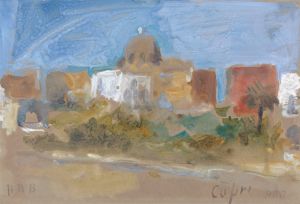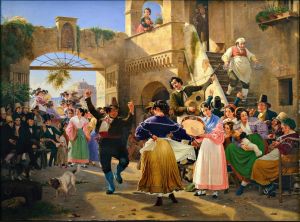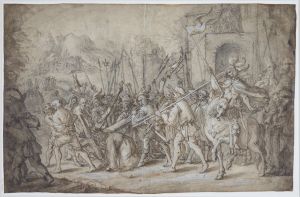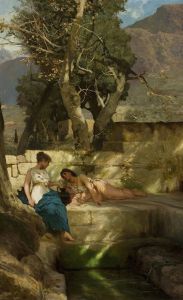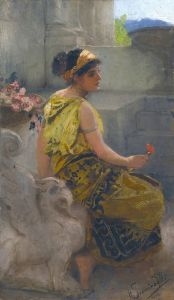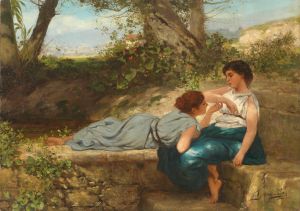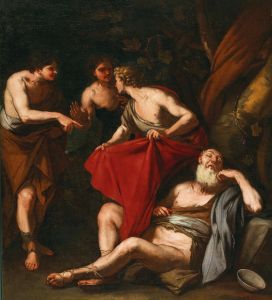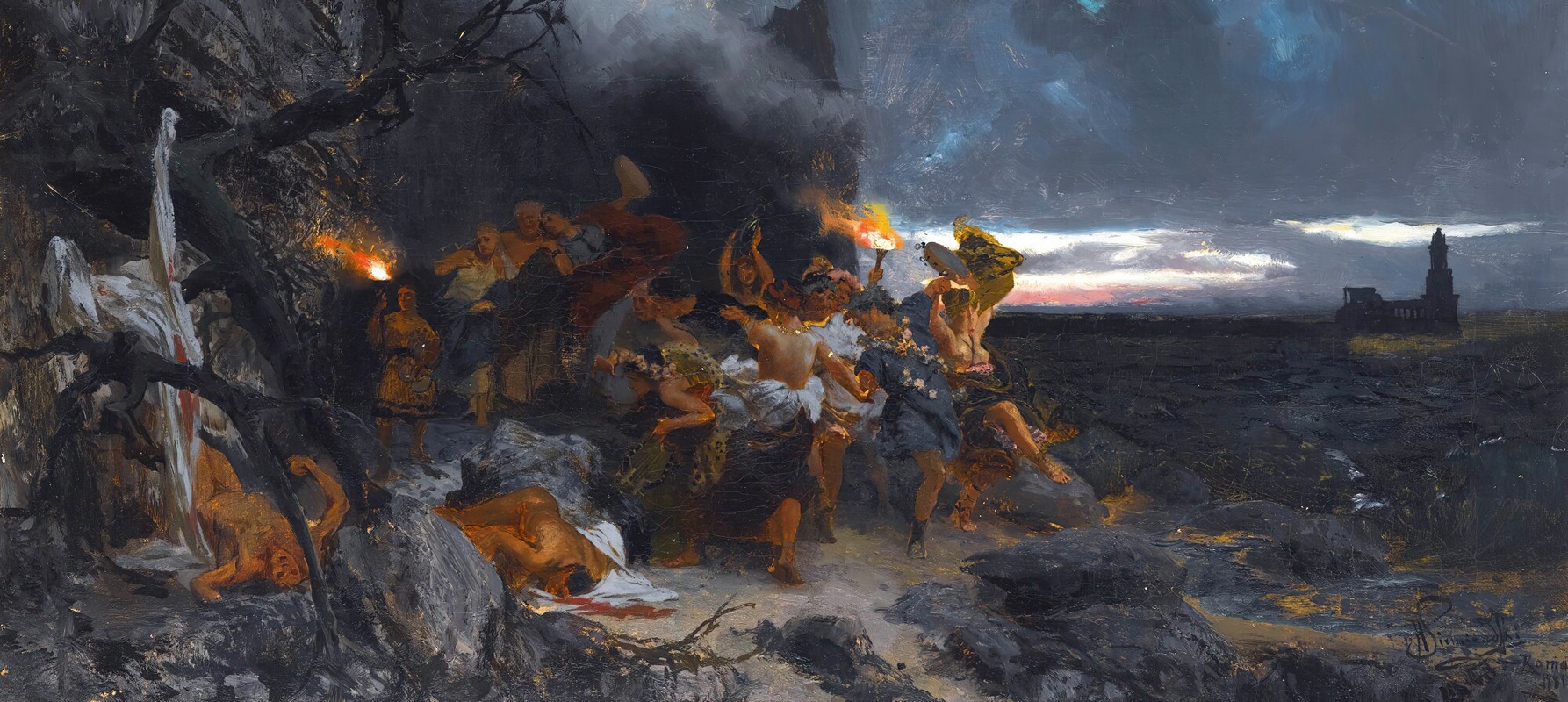
Orgy On Capri In The Time Of Tiberius
A hand-painted replica of Henryk Siemiradzki’s masterpiece Orgy On Capri In The Time Of Tiberius, meticulously crafted by professional artists to capture the true essence of the original. Each piece is created with museum-quality canvas and rare mineral pigments, carefully painted by experienced artists with delicate brushstrokes and rich, layered colors to perfectly recreate the texture of the original artwork. Unlike machine-printed reproductions, this hand-painted version brings the painting to life, infused with the artist’s emotions and skill in every stroke. Whether for personal collection or home decoration, it instantly elevates the artistic atmosphere of any space.
Henryk Siemiradzki's painting "Orgy on Capri in the Time of Tiberius" is a notable work by the Polish artist, renowned for his large-scale historical and mythological scenes. Siemiradzki, born in 1843 in what is now Ukraine, was a prominent figure in the 19th-century art world, particularly known for his academic style and detailed compositions. He studied at the Imperial Academy of Arts in Saint Petersburg and later in Munich, which influenced his classical approach to painting.
The painting "Orgy on Capri in the Time of Tiberius" depicts a scene set during the reign of the Roman Emperor Tiberius, who ruled from 14 AD to 37 AD. Tiberius is historically known for his retreat to the island of Capri in the latter part of his reign, where he reportedly indulged in various excesses. The island of Capri, located in the Bay of Naples, served as a secluded and luxurious retreat for the emperor, away from the political intrigues of Rome.
Siemiradzki's work captures the opulence and decadence often associated with Tiberius's time on Capri. The painting is characterized by its rich detail and vibrant colors, typical of Siemiradzki's style. It portrays a lavish banquet scene, filled with figures engaged in revelry, surrounded by classical architecture and lush landscapes. The artist's attention to detail is evident in the intricate depiction of clothing, textures, and the play of light and shadow, which adds depth and realism to the scene.
The painting reflects the 19th-century fascination with ancient Rome and its perceived moral decline, a theme that was popular among artists and writers of the time. Siemiradzki, like many of his contemporaries, was influenced by the classical revival and the romanticized view of antiquity. His work often explored themes of luxury, excess, and the contrast between civilization and nature.
"Orgy on Capri in the Time of Tiberius" is part of Siemiradzki's broader oeuvre, which includes other notable works such as "The Torches of Nero" and "Phryne at the Poseidonia in Eleusis." These paintings similarly explore historical and mythological themes with a focus on dramatic narratives and elaborate compositions.
Siemiradzki's paintings were well-received in his time, earning him numerous accolades and commissions. He was a member of several art academies and received awards at international exhibitions. His work was appreciated for its technical skill and the ability to bring historical scenes to life with vivid imagination and scholarly accuracy.
Today, Siemiradzki's paintings, including "Orgy on Capri in the Time of Tiberius," are held in various museums and collections, where they continue to be studied and admired for their artistic and historical significance. The painting serves as a window into both the ancient world it depicts and the 19th-century context in which it was created, reflecting the enduring allure of classical themes in art.






